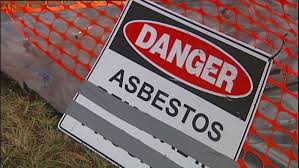
Telco e-Bulletin 2013 - #15
- Telstra CSS members get their 0.25%.
- NAS restructure: consultations continue.
- Bringing it all back home: Telstra acquires NSC.
- CWU pursues splicer upgrades.
- Ride-ons by ISGM trainees.
- CWU to help track asbestos in Telstra exchanges.
- Optus revenue decline continues.
- Optus to keep satellite – for the time being.
- Unions win big pay rise for apprentices.
1. Telstra CSS members get their 0.25%
In a win for members who are in the Commonwealth Superannuation Scheme (CSS), Telstra has formally advised affected employees that it will pay them an extra 0.25% in remuneration back dated to 1 July 2013.
The CWU has been pursuing the issue of superannuation payments to these members for several months. As advised in earlier E-bulletins, the problem arose because employees on this scheme already receive more than 9% in employer contributions because of the 3% productivity component that dates from the late 1980s.
In line with its legal obligations under the Superannuation Guarantee, Telstra increased its payments by 0.25% for most employees on 1 July this year. In the case of the CSS members, however, it simply attributed 0.25% of the 3% component to employer contributions.
This rebalancing did not change the total 12% payment being made on behalf of these employees. But it did effectively mean they were funding their own superannuation guarantee increases.
Telstra has now agreed that while no additional employer payments need to be made to the CSS scheme, affected employees will be paid an additional 0.25% in fixed remuneration. This is in line with the approach adopted in the last EA to other employees whose employer contributions are already above 9%.
Telstra has advised that it will pay the increase in two stages due to the remuneration review activities taking place in September and October:
- The first phase will take effect from 12 September 2013 and will include this further increase from that date; and
- The second phase will include the back dating of the arrangements to 1 July 2013 to 11 September 2013 and is scheduled to occur in November.
Any CSS-based member who does not receive these adjustments should contact his/her union branch.
2. NAS restructure: consultations continue
Telstra has advised the CWU that it is still refining its plans for the reorganisation of Network Assisted Services (NAS) and is still consulting with staff on proposed changes.
In July Telstra told the CWU that the proposed introduction of a Global Delivery Model in NAS would involve the offshoring of some 170 jobs.
Telstra says these losses would be offset by the creation of 350 new positions associated with the Department of Defence contract which Telstra won earlier this year. Telstra has also said that they hope to win further business for NAS this year which would create more employment opportunities.
Be that as it may, NAS employees have been telling both Telstra and their unions that they have concerns about the impact of the reorganisation on services, especially the offshoring of job.. It appears that this feedback is prompting a more cautious approach by management than is usually seen in such circumstances.
Telstra now say that they expect to be in a position to finalise their new NAS model by the end of September.
In the meantime the CWU will remain in discussion with Telstra over this reorg and is keen to hear from affected members about their views on the proposed operational changes.
3. Bringing it all back home: Telstra acquires NSC Group
In a further confirmation of its growing focus on providing advanced service packages to regional businesses, Telstra has acquired technology company North Shore Connections (NSC) Group – the very company to which it outsourced its enterprise internet telephony business in 2007.

NSC Group’s 230 employees will all be offered work at Telstra according to NAS head David Burns and can be expected to join the 100 Telstra employees already working in its unified communications division.
Integration of these new staff into the company could present further challenges for what is already a complex reorganisation of the NAS operational structure.
4. CWU pursues splicer upgrades
The CWU is still pursuing upgrades for members doing fibre splicing.
The union made representations to Telstra on behalf of a number of members classified at CFW3 and CFW 4 level who have been doing this work. The CWU has argued that they should be classified as CFW5s.
The CWU met with Telstra on 9 August to discuss this and other issues relating chiefly to the field workforce. Telstra advised the union that it had reviewed the work functions being undertaken by these members and believed that it was rightly classified as being at CFW4 level.
Telstra says that its decision is based on skill level alone and deliberately does not take into account years of experience.
Some CFW3s have consequently been reclassified as CFW4s but none have been put up to CFW5s.
The CWU has indicated that it disputes this assessment and Telstra has agreed to further discussions.
5. Ride-ons by ISGM trainees
As reported in earlier E-bulletins, the CWU has been in dispute with Telstra over the use of its employees to provide “ride-ons” to people being considered for traineeships by contracting company ISGM.
Under the government-funded scheme being used by ISGM, unemployed people are given 150 hours classroom training in basic telecoms skills and then taken out into the field for a week so that their suitability for the job can be assessed. Those found suitable then progress to a full traineeship.

Evidently ISGM contractors (like AWA-based employees in Telstra) are not keen on the “down time”
The CWU has raised a number of concerns about this scheme including the appropriate CFW grading level for Telstra employees involved in it. This matter has not yet been resolved.
The CWU has also pointed to uncertainties about responsibilities for workplace health and safety (WHS), proper induction into Telstra procedures and security checks.
Telstra has now advised that responsibility for certain WHS matters such as provision of protective equipment lies with the group training company involved in the scheme, AiGTS. Security checks are also their responsibility.
Telstra also says that the trainees should not be working at heights, in ceilings or up poles while they are in the “observation” phase of the programme which includes the initial “trial” ride-on period.
The CWU therefore advises members that:
- They should not take any trainees on ride-ons who have not been provided with appropriate PPE equipment. Any cases of this not being provided should be reported to Telstra and to the CWU.
- They should not involve trainees still in the “observation” stage of the programme (i.e. the initial 5 day ride-on period) in any work in ceilings, in manholes, on wires or at heights. This would involve a health and safety risk.
The CWU has also questioned whether Telstra employees are indemnified against any injury that the trainee might receive in these or any other circumstances (e.g. travelling in the Telstra vehicle at any time).
Telstra has recently knocked back a compensation claim by an employee injured while returning home in a take-home vehicle. The CWU is pursuing this question independently of the ISGM training issue. But is does highlight the question of what protections ISGM trainees and those responsible for their transport to and from work have under this scheme.
The union considers that Telstra employees should not be being asked to participate in provision of ride-ons while these questions remain unresolved.
If you are asked to do so, contact your state branch immediately for advice.
6. CWU to help track asbestos in Telstra exchanges
CWU members are set to play a role in identifying potential asbestos hazards in Telstra buildings.
The recent publicity given to the presence of asbestos in Telstra ducts and pits has helped the CWU highlight the issue of asbestos in other Telstra facilities, most notably exchange buildings. The union raised this issue with Telstra in early June, immediately after the NBN-related asbestos problems hit the headlines.

Its presence has always been potentially hazardous but the deterioration and damage to many exchanges in recent times has heightened the risk this material poses both to employees and to contractors.
Telstra has now agreed to a programme that will see the CWU help ensure that such asbestos-related hazards are properly identified and addressed.
Members aware of such hazards will be asked in the first instance to fill in an online form which can be found on the Telstra intranet under Network Site Maintenance. Members should also fill in the appropriate incident form (P400).
If the problem is not addressed within a reasonable time frame the CWU should be alerted. The union will then collate and pass on these alerts to Telstra.
7. Optus revenue decline continues
Optus is continuing to experience revenue declines with its most recent results revealing a drop of 6% for its mobile business and 5.3% overall. The figures represent an increase in the rate of decline from the company’s March quarter results which saw a fall in operating revenues of 3% for mobiles and 1.1% overall.
Optus was still able to report a net profit increase of 8% for the quarter to June but that result relies heavily on cost-cutting and the “operational restructuring” that began last year.
Optus pointed primarily to savings in retailing and administrative areas as the source of the 9% drop in operating costs for the quarter. Over the last 12 months, however, the company has outsourced and offshored a much wider range of functions, resulting in an overall staff reduction of 6.5% over the 12 months to June 3013.
Optus’ staff numbers are now some 8,500, down by over 2,000 from its peak in 2007-08.
Over and above any other objections the CWU has to outsourcing and offshoring, the union believes that it is a mistaken strategy for dealing with the longer-term challenges posed by today’s markets.
All telcos are currently having to deal with the implications of a world where traditional carriage services, especially voice, are no longer key revenue earners and where as service providers they are in danger of being bypassed by Over the Top (OTT) operators.
Advanced and customised data services, especially when provided over mobile platforms, provide a way forward but this requires investment in both infrastructure and skills to provide the basis for innovation.
It is here, in the CWU’s view, that Optus’ and other carriers’ attention should be focussed, not on further staff reductions.
8. Optus to keep satellite – for the time being
Optus has announced that it will not proceed with the sale of its satellite business – at least in the short term.
In March this year, Optus engaged finance houses Credit Suisse and Morgan Stanley to examine options for the future of the division. Expressions of interest were subsequently sought from potential buyers with a price tag of some $2 billion being reportedly put on the business.

Optus says now that it will retain and invest in the business although it has not ruled out a float at some later date.
The decision will be welcomed by employees involved in Optus satellite unit who have expressed concerns to the CWU about the possible impacts of a sale on their job security.
However, in the CWU’s view, the whole exercise still suggests a degree of strategic uncertainty within Optus as to the focus of the company’s future business and its place within owner SingTel’s wider regional strategy.
Optus still provides SingTel with cash flows that are crucial to its expansion into other regional markets. But it appears at present to be marking time rather than gaining on its local competitors in its mobile business. And its satellite operations will face fresh challenges when the NBN Co satellites come on stream in 2015.
9. Unions win big wage rise for apprentices
In a big win for young workers, the Fair Work Commission (FWC) has awarded big pay rises to apprentices, particularly those in the early years of training.
The pay rise will see pay rates for first years rise to 55% of the relevant Award rate from as little as 35% in some industries. People starting apprenticeships over the age of 21 will be entitled to 80% of the rate for a tradesperson.
The union movement has argued strongly for such increases to reflect the changing nature of apprenticeships and to address the problem of declining participation rates.
To date, apprentice wages have simply failed to keep up with the reality of today’s workforce. Apprentices are no longer 14 or 15 year old adolescents living as dependents at home. They are young adults, often with Year 12 qualifications, who reasonably expect to earn enough to lead an adult life, even if it is a modest one.
The failure of the current system to provide such earnings is widely regarded as one of the chief reasons for declining levels of apprenticeship completions.
Apprenticeship commencement numbers have been falling since June 2012 for three quarters in a row. On top of that, apprenticeship completion rates are at only 50-55%. Meanwhile numbers of 457 visas in skilled trades categories have risen.
The extra $70-100 that the FWC decision will put into the pockets of many apprentices should go some way towards reversing this trend.










